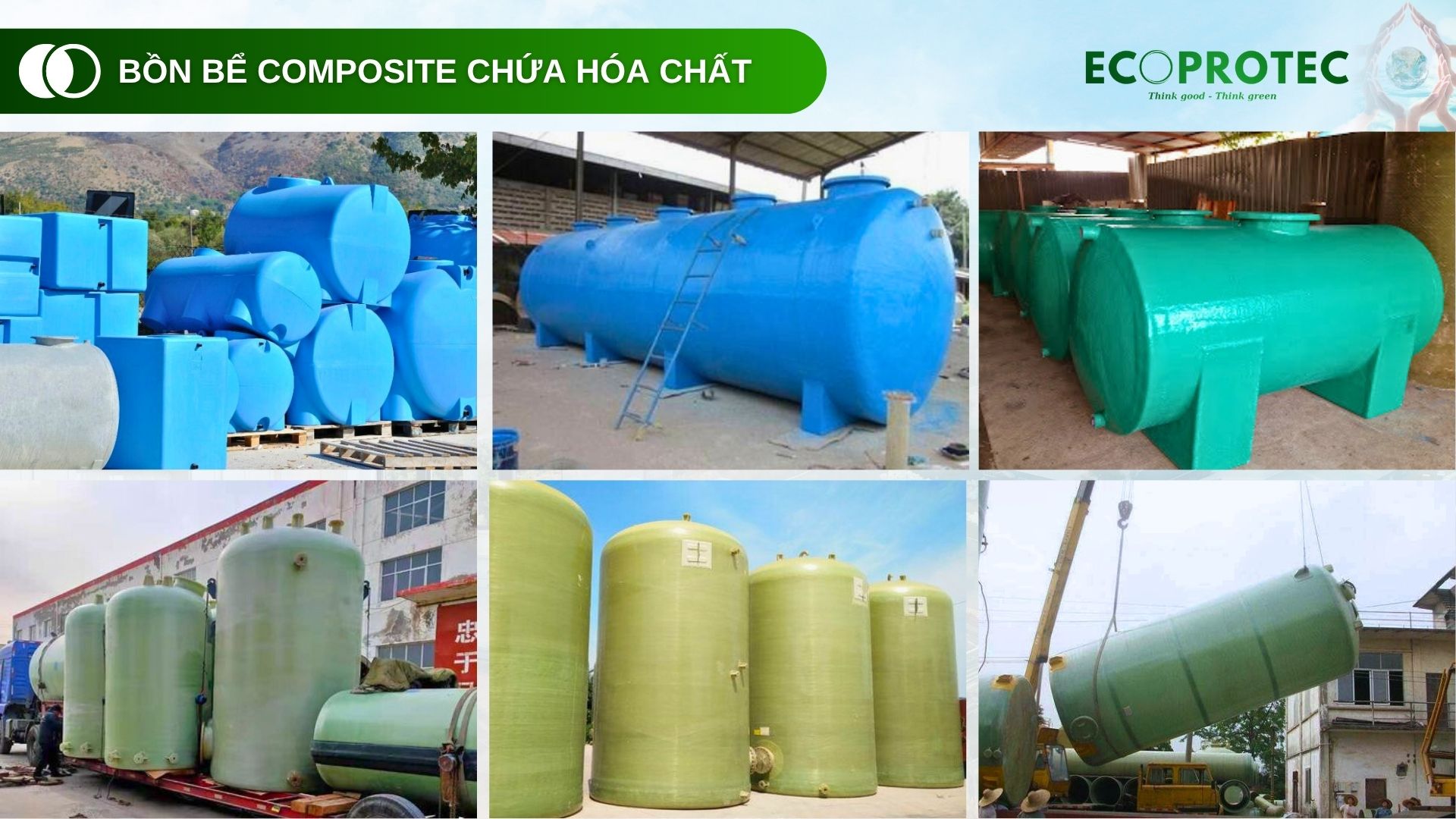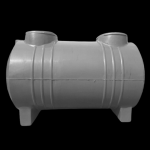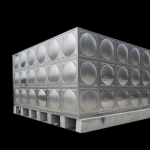What is an FRP Composite Chemical Storage Tank? Advantages, Disadvantages & Practical Applications
Are you looking for a safe, durable, and corrosion-resistant solution for chemical storage? FRP composite chemical storage tanks are the optimal choice for businesses in industries such as water treatment, chemicals, food, electroplating, and more. With resistance to strong acids like H₂SO₄, NaOH, HCl and a lifespan of up to 25 years, composite chemical tanks are being widely adopted. In this article, let’s explore with ATNewtech an overview of chemical tanks, their structure, pros and cons, and real-world applications to help you choose the most suitable tank for your needs.
1. General Introduction to Chemical Storage Tanks

In many industries such as water treatment, textile dyeing, electroplating, chemicals, food processing, pharmaceuticals, etc., storing highly corrosive chemicals is essential. Unlike domestic water tanks, chemical storage tanks must meet high standards for chemical resistance, non-reactivity, and safety for both humans and surrounding equipment.
Among the options, FRP (Fiberglass Reinforced Plastic) composite chemical storage tanks stand out as a superior solution due to their corrosion resistance and high durability.
2. What Is an FRP Composite Chemical Storage Tank?

FRP composite chemical storage tanks are made from a resin matrix (polyester, epoxy, or vinylester) reinforced with fiberglass. This material structure enables the tank to withstand pressure, heat, and corrosion from strong chemicals like H₂SO₄, NaOH, HCl, Javel, etc.
Main 3-layer structure of composite tanks:
-
Liner Layer: Directly contacts chemicals, typically made of vinylester resin.
-
Structural Layer: Composed of multiple fiberglass layers mixed with resin, providing high mechanical strength.
-
Outer Coating: Protects the tank from UV rays, mold, and minor impacts.
3. Advantages of Composite Chemical Storage Tanks

-
Absolute Corrosion Resistance: Can store highly corrosive chemicals like acid tanks, H₂SO₄ tanks, etc.
-
Lightweight & Easy Installation: Much lighter than steel or stainless steel tanks.
-
Lifespan up to 25 Years: Requires minimal maintenance, resists oxidation, and doesn’t rust.
-
Heat & Pressure Resistant: Can withstand up to 120°C depending on resin type.
-
Flexible Design: Customizable in terms of volume, dimensions, special tanks, underground or above-ground installation.
4. Real-World Applications of Composite Chemical Storage Tanks
-
Water and Wastewater Treatment: Stores PAC, Polymer, H₂SO₄, HCl…
-
Textile, Plating, Electronics Industries: Stores washing, neutralizing, and strong acid chemicals.
-
Chemical & Fertilizer Industry: Stores H₂SO₄, HNO₃, NH₄OH, NaOH…
-
Livestock & Aquaculture: Stores liquid chlorine, Javel, water treatment chemicals.
-
Food & Pharmaceutical Plants: Stores pure solutions and solvents.
5. Why You Should Use FRP Composite Acid Tanks
Sulfuric acid (H₂SO₄) is highly corrosive and oxidizing, quickly damaging ordinary materials. For H₂SO₄, only vinylester-based FRP provides the necessary durability. FRP composite H₂SO₄ tanks:
-
Offer absolute acid resistance
-
Ensure safe operations
-
Provide long-lasting durability
6. Key Criteria for Choosing a Suitable Chemical Storage Tank
-
Type of chemical, concentration, and temperature
-
Desired capacity
-
Installation environment: indoor, outdoor, underground…
-
Included accessories: pipelines, discharge valves, flanges, level sensors
7. ATNewtech – Trusted Supplier of Composite Chemical Tanks

-
Custom manufacturing, multiple tank formats
-
Capable of storing acids, alkalis, solvents
-
Made with internationally certified anti-corrosion materials
-
Nationwide delivery, installation support
-
Warranty up to 10 years
Contact:
-
📞 Hotline: 0834 473 166
-
🌐 Website: www.atnewtech.vn
FRP composite chemical storage tanks are a modern, sustainable, and safe solution for storing acids, alkalis, and industrial solvents. Investing in the right tank helps businesses save costs while ensuring safety and long-term efficiency.

 Composite Tank
Composite Tank Water tank cover.
Water tank cover. Kitchen equipment
Kitchen equipment Industrial water tank
Industrial water tank


